How to Design an Editorial Process That Fits Your Needs
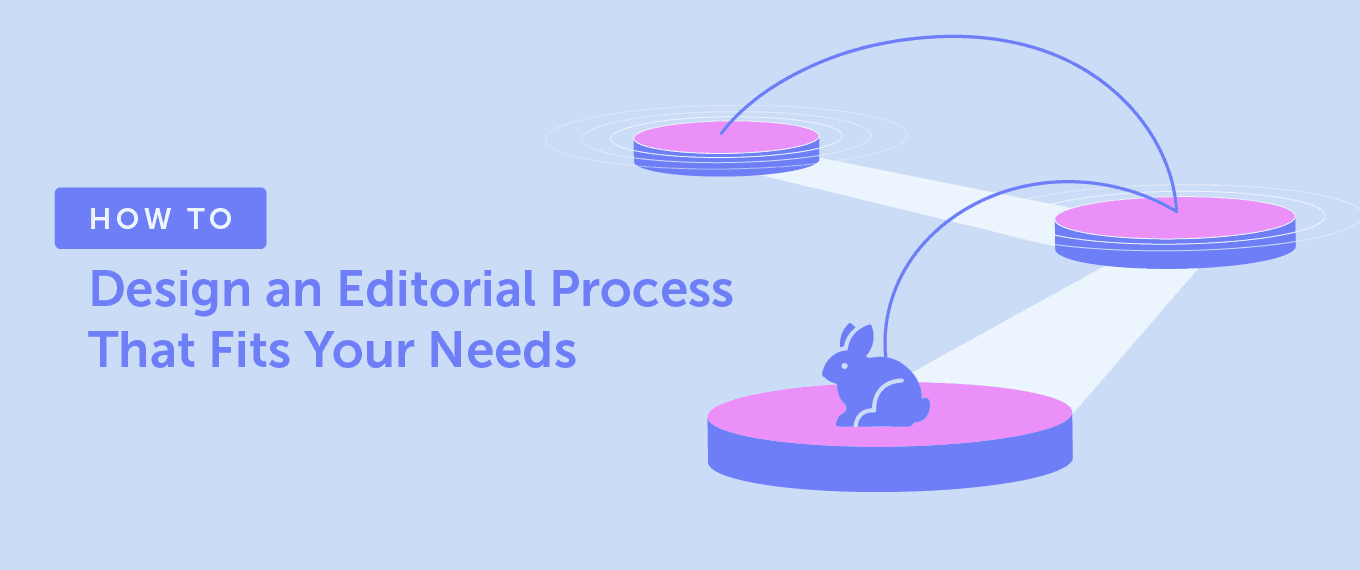 It’s relatively easy to create great content when you are a one-person team. You know the type of content you want to write, your editorial tone, and have a clear sense of expectations.
It gets harder to ensure that all content is up to the same high standards as your content team grows. A strong editorial process will ensure everyone on your team creates content to the same high standards.
Established print publications have long recognized the importance of a strong editorial process. Newspapers have writers, junior editors, senior editors, and style guides to ensure the quality of their content. Your company might not have this structure, which is a problem.
This guide will show you how to create a strong editorial process for your company. Read on to learn how to organize your content team for success.
It’s relatively easy to create great content when you are a one-person team. You know the type of content you want to write, your editorial tone, and have a clear sense of expectations.
It gets harder to ensure that all content is up to the same high standards as your content team grows. A strong editorial process will ensure everyone on your team creates content to the same high standards.
Established print publications have long recognized the importance of a strong editorial process. Newspapers have writers, junior editors, senior editors, and style guides to ensure the quality of their content. Your company might not have this structure, which is a problem.
This guide will show you how to create a strong editorial process for your company. Read on to learn how to organize your content team for success.
How to design an editorial process that fits your needs.
Click To TweetTake These Editorial Process Templates With You
To make your editorial process even easier, we have created these templates for further guidance. This bundle of templates includes a:- 2021 Annual Content Calendar Template to help you keep track of your projects, deadlines, and assigned tasks.
- Content Outline Template for making the creation of a creative brief a breeze.
- Editorial Workflow Template, so you can monitor who's doing what and when each step has been completed.
The Benefits of a Strong Editorial Process
From the moment an idea for content is conceived to its publication, the editorial team has to make many small and big decisions. With an editorial policy in place, it is easier to ensure the quality and tone of content published is uniform across all platforms. That makes it feel like the content is all produced by one company — your brand.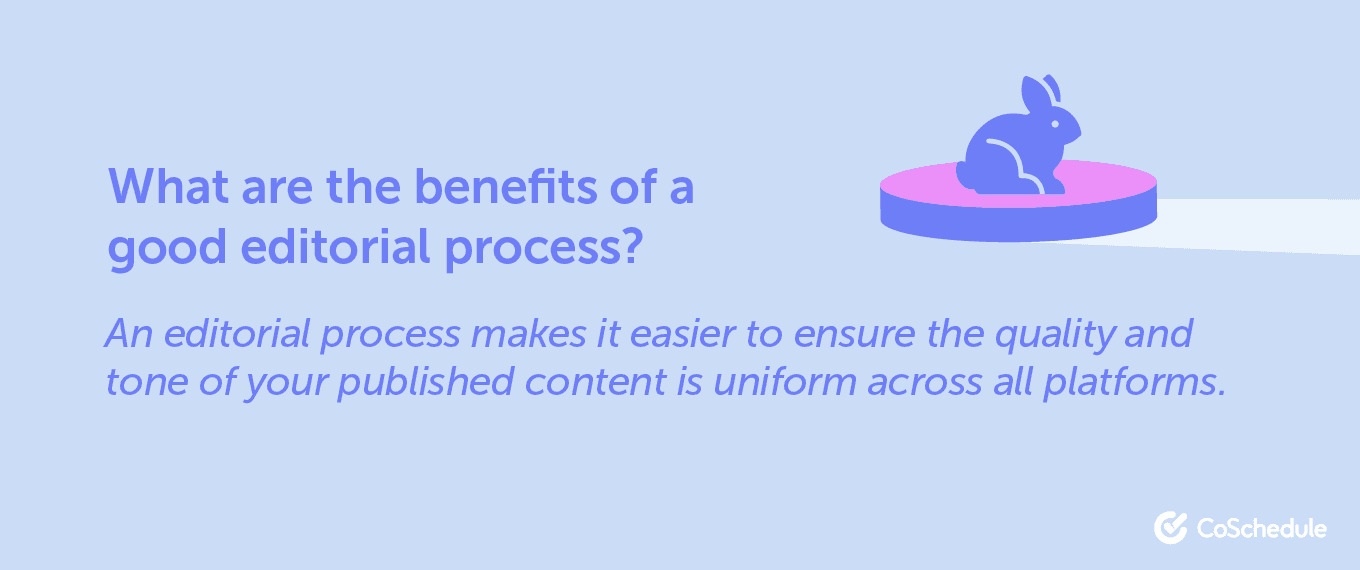 From published content to a project proposal, your style guide will help ensure uniformity.
An editorial process is more than a set of guidelines to help writers develop ideas and adopt the right voice. It also provides a structure for your content production.
Content is produced by your writers and then edited by the editors.
Your editors ensure that the content produced by your team shares the same brand voice. Good editors will also provide critical feedback and encourage writers to develop and improve. They are a bit like the coach of your local football team.
With the right encouragement and peer-review process, the quality of the content your team produces will improve. Moreover, if you have a senior editor in place, they can provide professional feedback to your editors.
When everything runs correctly, that structure will help your team excel.
Another benefit of having a strong editorial process is the ease in scalability. As your business grows, you will add more people to your content team.
Having a structure in place allows for easy expansion, and it can help you keep the content consistent even as you add more writers and editors to your team. Putting that structure in place for growth is important for a scale-up.
From published content to a project proposal, your style guide will help ensure uniformity.
An editorial process is more than a set of guidelines to help writers develop ideas and adopt the right voice. It also provides a structure for your content production.
Content is produced by your writers and then edited by the editors.
Your editors ensure that the content produced by your team shares the same brand voice. Good editors will also provide critical feedback and encourage writers to develop and improve. They are a bit like the coach of your local football team.
With the right encouragement and peer-review process, the quality of the content your team produces will improve. Moreover, if you have a senior editor in place, they can provide professional feedback to your editors.
When everything runs correctly, that structure will help your team excel.
Another benefit of having a strong editorial process is the ease in scalability. As your business grows, you will add more people to your content team.
Having a structure in place allows for easy expansion, and it can help you keep the content consistent even as you add more writers and editors to your team. Putting that structure in place for growth is important for a scale-up.
A benefit to having a strong editorial process is the ease of scalability.
Click To TweetThe Relationship Between Editorial Process and Brand Identity
Branded content is produced as a part of a long-term strategy to engage with the reader and generate leads for your business. Some brands stand out due to the quality of content, message consistency, and tone. One example is General Electric, which runs an online magazine on Tumblr, called TXCHNOLOGIST. The online magazine explores advancements in technology and science. General Electric is active in manufacturing, power, aviation, oil, and gas. The publication ties in well with their larger narrative. The content they produce, which is also featured on Scientific American and Business Insider, has a strong standalone entity: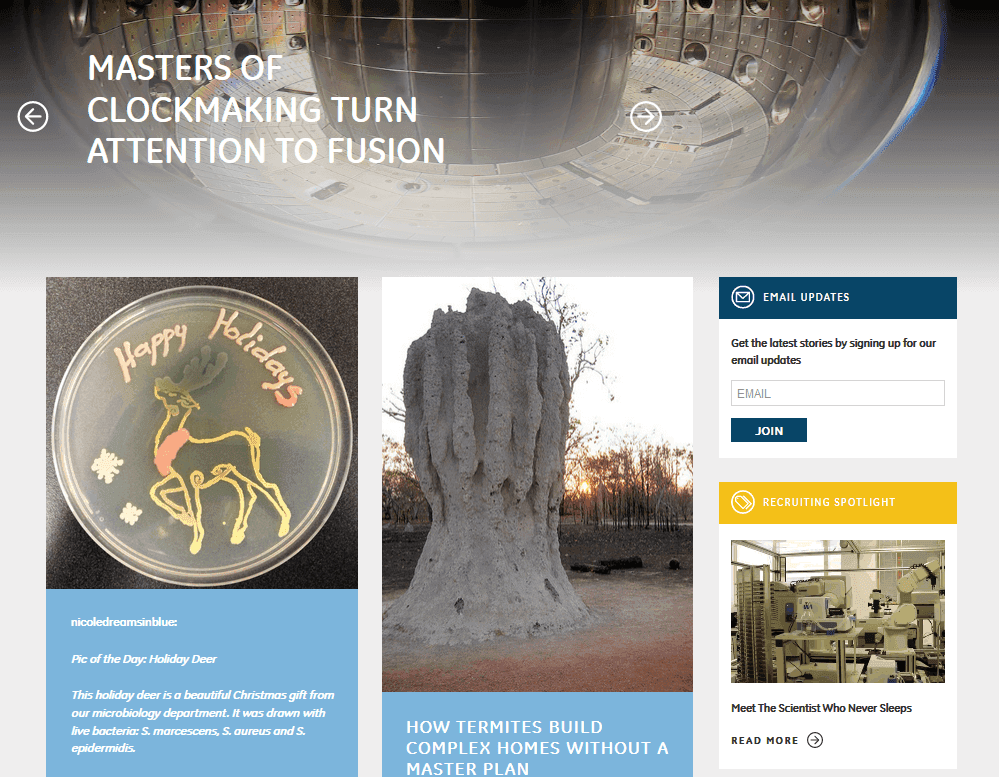 The magazine serves as a good marketing vehicle for the brand because they have tried to create a publication that is of interest to their target demographic. A good editorial policy can help you establish this industry presence.
Another brand that hits the mark in content is Adobe, with its online magazine CMO.com. The magazine features marketing ideas, research, interviews, and curated news from the world of marketing. The content that is overseen by Adobe’s in-house editorial board is targeted at senior marketing professionals.
The magazine serves as a good marketing vehicle for the brand because they have tried to create a publication that is of interest to their target demographic. A good editorial policy can help you establish this industry presence.
Another brand that hits the mark in content is Adobe, with its online magazine CMO.com. The magazine features marketing ideas, research, interviews, and curated news from the world of marketing. The content that is overseen by Adobe’s in-house editorial board is targeted at senior marketing professionals.
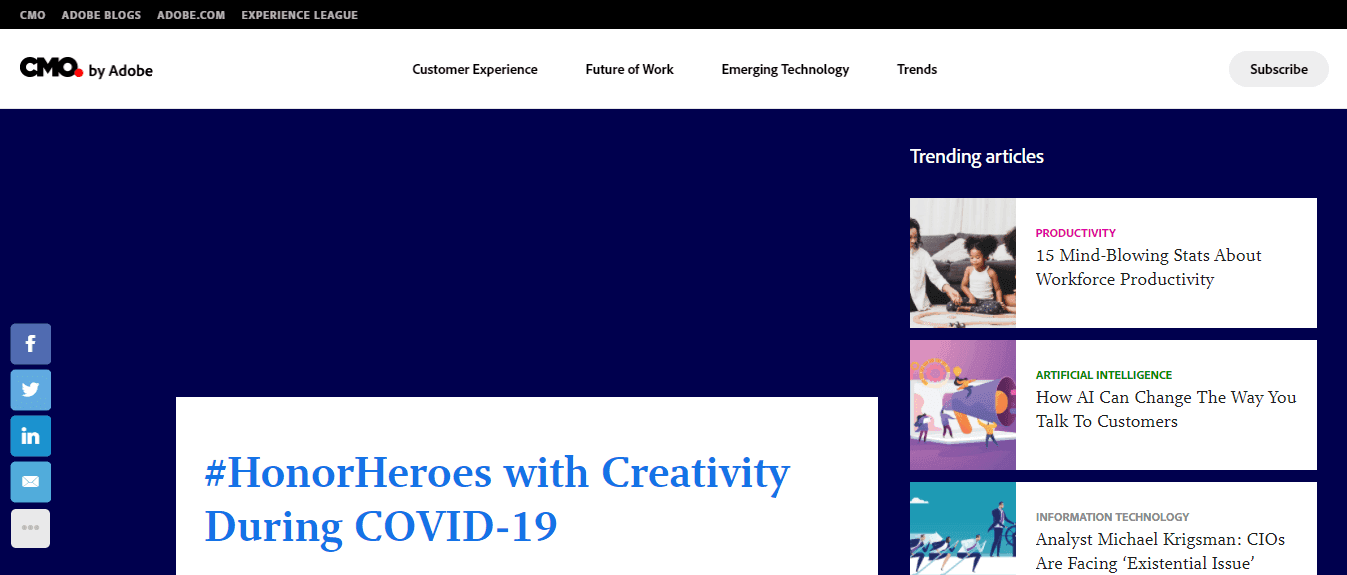 The company’s brand visibility is subtle, with Adobe.com and Adobe blogs appearing in the main masthead only. Each piece of content is meant to be informative and rarely promotes the brand directly.
The magazine is a success. The publication has a strong tone: Adobe is the one-stop place for anything marketing-related, whether it is news or business software. Adobe’s digital insight reports have gained an audience by market watchers.
These two examples illustrate how you can create great content for your industry. There are a lot more examples I could point to, but I’m sure you get the idea.
The company’s brand visibility is subtle, with Adobe.com and Adobe blogs appearing in the main masthead only. Each piece of content is meant to be informative and rarely promotes the brand directly.
The magazine is a success. The publication has a strong tone: Adobe is the one-stop place for anything marketing-related, whether it is news or business software. Adobe’s digital insight reports have gained an audience by market watchers.
These two examples illustrate how you can create great content for your industry. There are a lot more examples I could point to, but I’m sure you get the idea.
The 7 Main Elements of the Editorial Process
I showed you how some businesses use branded content to stay relevant. Every brand differs in the way they create and market content. However, regardless of your approach to content marketing, you want to ensure a consistent brand voice with your audience. In the following sections, I’ll share the seven main elements of the editorial process. You can use these insights to create the editorial policies for your business.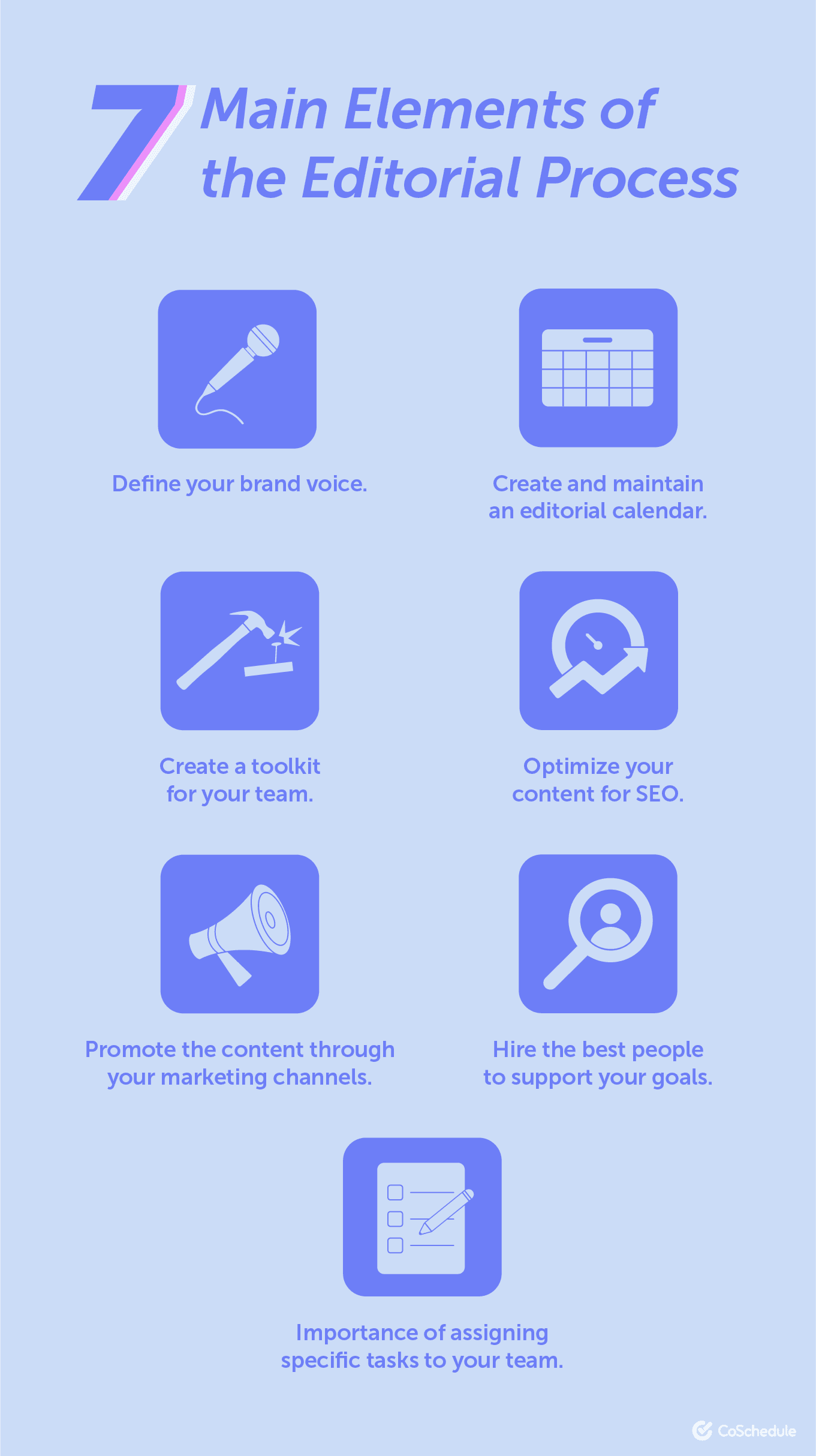
1. Define Your Brand Voice
Choosing what type of content to cover on your blog or through publications will require several rounds of brainstorming — and rightly so. Keep in mind, once you’ve chosen the types of content you will feature, you still need to do the most important step: defining your brand voice. Your brand voice will underpin your entire content marketing strategy and define how you write and for whom you write. Start by thinking about your brand’s identity. What words or phrases come to mind when you think of your company? Are you fun or serious? Offbeat or traditional? Corporate or creative? Etc. Come up with three to five words that define your brand identity. You’ll check all future content against these words to ensure they fit. For example, a fun and offbeat brand might use plenty of slang and humor, while a serious and corporate brand would use more formal language. You’ll also need to define your target audience. Who are you talking to? Identify who your ideal customer is, ask yourself what motivates them, and speculate on the type of content they want to consume. For example, a brand aimed at young people and students would write very differently to one aimed at senior business executives. Once you understand your target audience and brand identity, you can build a style guide that defines your brand voice. Remember to include:- Language parameters. Formal or informal? Is slang permitted?
- What is your aim? To persuade, entertain, or inform? This might be different for each content type.
- What other brands are you inspired by? Do not copy, but feel free to draw inspiration from others within and outside your niche.
- Any specific grammatical or spelling conventions you will follow. For example, will you use International or American English? Will you use short sentences and paragraphs, bullet points, and numbered lists?
2. Create and Maintain an Editorial Calendar
An editorial calendar is the simplest way to make sure your writers and editors have time to plan each article. It also ensures a degree of coherence for the content you produce within a publication, in a month, a quarter, or whatever that happens to be. Your editorial calendar is an outline of when each article is to be published and who is involved. A content calendar provides structure to what you are creating. With an editorial calendar in place, you know what keywords to target and when content will be published. Finally, a content calendar gives your team an idea of the tasks that are pending and a clear workflow. In the case of GE and Adobe, we saw that their selling point was their reports and content credibility. Such detailed content requires time to plan and collate information. In the absence of a calendar, it would be impossible to plan the creation of these reports. As mentioned earlier, an editorial calendar provides a structure for an on-going marketing campaign.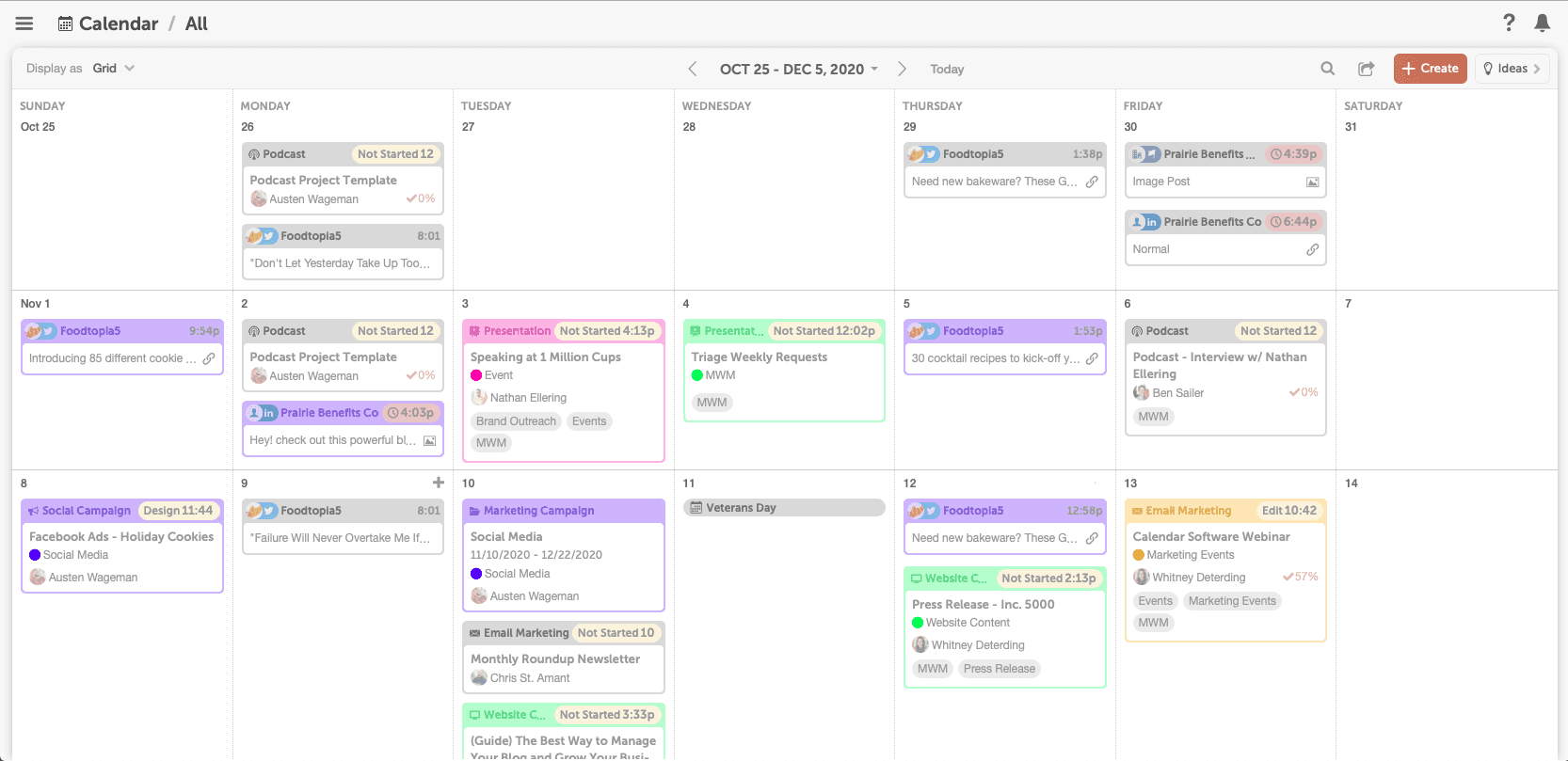
3. Create a Toolkit for Your Team
You know the kind of content you want, and you have an idea of the number of articles you want to publish. The next step is to equip your editorial process with the right tools. There is a wide range of tools you should use as part of the editorial process. Here are a few to consider:- Excel Sheets, or you can use Google Sheets to make them easily shareable amongst your team.
- Team collaboration software, such as Trello or Slack.
- A project management tool, like CoSchedule.
- Image editing and graphics creation tools, like Photoshop and Canva to make your graphics pop.
- Video editing tools if you incorporate video into your content creation system.
- A good grammar checker is also useful.
4. Optimize Your Content for SEO
Before the content is live, a few housekeeping rules need to be in place within the editorial process. A good editor will make sure the content is easy to read, free of grammatical mistakes, and properly sourced. In addition to creating great content, make sure it is SEO optimized to climb up the search results. Include relevant long-tail (longer and more specific) keywords, and use a plugin, like Keywords Everywhere, to identify those with high search volume and low competition. You can use online keyword analysis tools to identify relevant phrases to incorporate in your copy. Here are a few easy things to optimize and how to do them:
Here are a few easy things to optimize and how to do them:
- Write longform content of at least 1500 words and always use your focus keyphrase 5–6 times within each piece of content.
- Use alt text on all images. This is a short snippet of text that describes the image’s contents and purpose. It should contain your content keyphrase.
- Ensure your H1 tags (i.e. content titles) contain your focus keyphrase.
- Ensure your site loads quickly. You should aim to reduce your server response time if your site takes more than two seconds to load.
- Link to at least one external site that offers high-quality, relevant content within each piece you publish.
- Create a relevant meta description for each piece of content. You can use a plugin, like Yoast, to do this.
- Promote your content elsewhere on the web. You can do this by publishing guest posts, using a tool like HARO, to connect with reporters for relevant stories, and by writing great content that others will want to share.
Beware of keyword stuffing! You don't want to scare off your audience.
Click To Tweet5. Promote the Content Through Your Marketing Channels
Once you have published your content, you need to promote the content. Promoting content takes a lot more time than creating the content. Harness the power of social media and share your content across all channels to get more eyeballs. However, it’s not enough to just publish each new blog post on social media and hope for the best. You need a solid strategy. One of the benefits of social media is that each platform has a slightly different user base. As you build your strategy, consider where your audience is. You might not need to use every single platform. In fact, you probably don’t. For example, young people typically use platforms, like Instagram and TikTok, while senior businesspeople favor LinkedIn. Discover where your audience is and adapt your strategy accordingly. Once you’ve chosen your platform(s), you can build your own promotion strategy for each piece of content. Here are a few of my top tips to get maximum engagement:- Use an eye-catching featured image with every post you share on social media. Posts with images get substantially more engagement than those without.
- Remember that social media is a passive medium, and you only have a second to grab your audience’s attention. Use an enticing headline accordingly.
- Tease the blog post or video’s content in the social media caption. Why should people care? Make them want to click the link!
- Ask a direct question to encourage audience participation.
6. Hire the Best People to Support Your Goals
A great idea is useless without the right people. It takes a team of good writers and editors to take an idea and turn it into something your audience will love. Invest in finding talented employees. Good human resources contribute to a flexible and creative organization. When you get a team that works well together, you can produce great results. The people you will need will depend on your business goals. Here are some you might wish to consider:- Senior editor and one or more junior editors
- Content marketing specialist
- Social media specialist
- Copywriter
- Graphic designer, photographer, or videographer
- Relevant experience in your industry, a related industry, or a relevant degree — if you’re hiring new graduates.
- A great team player.
- Ability to work well remotely and with minimal supervision.
- Willingness to learn and develop.
7. Importance of Assigning Specific Tasks to Your Team
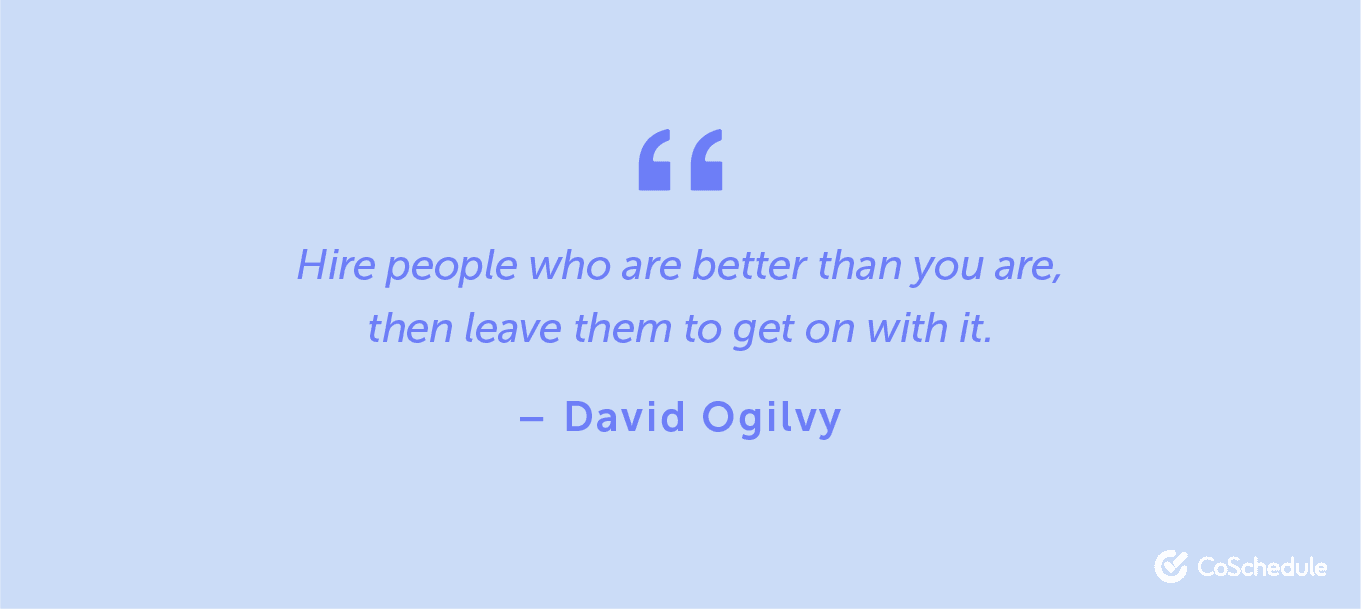 This is particularly true for your editorial process.
Before you let the best talent get on with their work, make sure you tell them exactly what it is that you want them to do.
One of the benefits of assigning specific tasks to your team is clarity in the workflow. Everyone in your team should be absolutely clear on what their responsibilities and KPIs are.
For example, in the case of a piece of blog content, you’ll need to know who will:
This is particularly true for your editorial process.
Before you let the best talent get on with their work, make sure you tell them exactly what it is that you want them to do.
One of the benefits of assigning specific tasks to your team is clarity in the workflow. Everyone in your team should be absolutely clear on what their responsibilities and KPIs are.
For example, in the case of a piece of blog content, you’ll need to know who will:
- Write
- Edit
- Source or create great visuals to go with it
- Upload it to your CMS
- Optimize it for SEO


